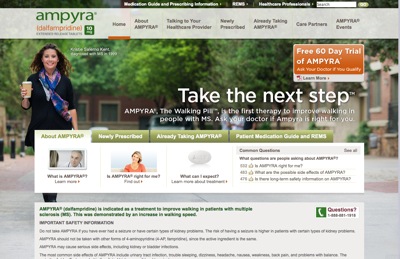Klick Health celebrates its 15th birthday this month, but you can put away your teenage stereotypes right now. With its spectacular growth record, enviable client list, and penchant for outside-the-box innovation, there’s really nothing awkward, shy, spotty or unfocused about the self-proclaimed “largest independent digital health agency in the world.”
Klick Health had barely launched when president and CEO Lee Segal set the cultural tone by banning the internal use of e-mail. “E-mail is the ultimate ‘faster horse,’” he scorns. “It’s a faster way to deliver a letter, but it doesn’t have context and it doesn’t have workflow. It’s an unintelligent tool.”
(It’s okay to pause at this point and wonder how anyone might have reached that conclusion in 1997.)
Segal’s vision for the Toronto, ON-based shop is to shape the future of digital health and to find innovative ways to give clients a competitive edge. So far, so good, it would seem. Revenues are up by 60% in 2012, while he expects the current headcount of 250 to swell by more than 100 in the next year.
Existing clients, including seven of the top 10 pharma companies, account for more than 90% of this growth. Many of these engagements are digital AOR assignments spanning the gamut of responsibilities, from planning to execution. And that’s just how Segal likes it.
“Agencies are getting a lot better at executing individual work streams but the magic is in how it all comes together,” he says. “For us it’s really about helping clients as master orchestrators. That’s the part that is missing in the marketplace.”
Segal insists on appointing only talented, senior execs to manage clients and steward brands. “We ask them: ‘Are you receptive to walking away from the ego knowing that we will never again measure your success by the number of people that report to you?’”
Just about everything the agency says, does or thinks about—internally and externally—is underpinned by data. In short, if you can’t measure it, analyze it and optimize it, Klick Health is unlikely to touch it.
“There is no such thing as a perfect business, so the next best thing is to run a business with no surprises,” says Segal. “Data can do that for you. And by aggregating this information [you can predict] how well anything will go,” he says. “It can be used to keep our teams looking forward and to watch for the blind spots.”
Segal says that in most organizations technology acts like an umpire or referee: “It’s constantly barking at you, telling you ‘Offside, offside, offside,’ then it reports to you after the fact. So how do you get the technology to actually help people before there’s an issue?”
Again, data. And while Klick Health uses plenty of it to drive its own business decisions, it also does the same for its clients, measuring every aspect of their workflow processes via proactive sessions it calls “love fests.”
“Data is the new creative,” asserts Segal. “You need to be creative, but you need to test how to get creative and you need everything to work synergistically. The data is what stitches it all together and allows you to optimize systematically.”
Klick Health even applies a quantitative approach to organizing, motivating and developing its workforce. Using a tool called Gene Sequencer, the agency quantifies an employee’s experience and identifies specific training needs, intervention opportunities and “teachable moments.” It can even measure their hopes and dreams.
“These days, it’s lazy not to add some quantitative analysis to make sure that you’re enabling your people to develop as quickly as possible,” says Segal. “That means everything that’s part of our culture needs to be quantified.”
And with a turnover rate of just 3%, Klick’s employees clearly appreciate the attention.
From the July 01, 2012 Issue of MM+M - Medical Marketing and Media







